Lesson 13: Greenhouse Structures (Printer Friendly Format)
page 1 of 14
Greenhouse Structures Introduction
The title of this lecture is "Greenhouse Structures." Here we'll cover background
about the original uses of greenhouses and their wide variety of uses today.
Different basic greenhouse structures (their components and functions) and
the advantages and disadvantages of each will be reviewed as will the advantages
and disadvantages of four major classes of greenhouse coverings.
We'll cover the criteria for selecting a greenhouse range location, with
the proper ways to orient the range and the different type bench arrangements
within the greenhouse. For all of the information on greenhouse structures
presented, be sure to list the major components and a brief description of
each. For example, the three basic greenhouse design types are attached
(lean-to), freestanding (even-span) and connected (sawtooth).
Also be able to list advantages and disadvantages of each.
To continue with this lesson, click on the word "next" in the upper-right
corner.
page 2 of 14
Lesson 13 Objectives
The purpose of this lecture is to provide background about greenhouse
structures. The lecture will conclude with a discussion on the four major
methods for heating greenhouses and the different types of ventilation and
cooling systems commonly used in greenhouses today.
Before beginning this session:
- Be sure you have read the reading assignment for this session. Check our
Course Syllabus for this lesson's assignment. To access the syllabus, select
the Syllabus tab above.
- Think about the following lesson objectives. After completing this lesson,
you will be able to:
- Provide background on when greenhouses were first used and their
wide variety of uses today.
- Discuss different basic greenhouse structure types and the advantages
and disadvantages for each.
- Discuss steps prior to laying the foundation, the type of foundation
to use and the basic components of a simple greenhouse, with their functions.
- Provide the four major classes of greenhouse coverings used today
and give their advantages and disadvantages.
- Discuss the criteria for selecting a greenhouse range.
- Discuss the proper ways to orient a greenhouse range and the different
types of bench orientations in the greenhouse.
- Discuss the four major methods for heating greenhouses and provide
the advantages and disadvantages of each.
- Discuss the different types of ventilation and cooling systems commonly
used in greenhouses today.
|
 As
you proceed through this lesson, answer the following items. They will
help you to focus on the important points in the lesson. As
you proceed through this lesson, answer the following items. They will
help you to focus on the important points in the lesson.
- Define the following: greenhouses, greenhouse range, headhouse,
attached greenhouse, freestanding greenhouse and connected greenhouse.
- What civilizations were the first to utilize greenhouse structures?
- Where can greenhouses commonly be found today?
- What are four factors that affect the grower's choice when
selecting the best size and type of greenhouse?
- What are three basic greenhouse design types and three examples
of each?
- What are the advantages and disadvantages of freestanding and
connected greenhouses?
- Prior to laying the foundation for a greenhouse, what should
be done?
- What are the six major structural components of the greenhouse?
Provide a function for each.
- What is the most important function of a greenhouse covering?
- List the four major types of greenhouse coverings and provide
several advantages and disadvantages of each.
- What are eight criteria to consider when selecting a site for
a greenhouse range?
- What are three factors to consider when orienting a greenhouse
range on a piece of land? What three commonly used types of bench
arrangements are found in greenhouses and what are the benefits
of each?
- What are four types of heating systems used in greenhouses?
Provide the advantages and disadvantages of each.
- In addition to cooling, what are three reasons to ventilate
a greenhouse?
- What are four types of ventilation and cooling systems used
in greenhouses today? Provide one way to cool a greenhouse without
using a cooling system.
|
page 3 of 14
Background Information
Early Egyptian and Roman civilizations used greenhouse structures to protect tender crops such as fruits and vegetables during the winter months. Today greenhouses are used for a wide variety of purposes and may be found in the following:
- Homes
- Offices
- Hospitals (Horticulture Therapy)
- Public gardens
- Research institutions
- Commercially (wholesale and retail)
Greenhouses are structures covered with a transparent material that allows sufficient sunlight to enter for the purpose of growing and maintaining plants. Greenhouse range refers to two or more greenhouses located together. Headhouse is a central building used for offices, storage and work space with attached greenhouses. See Figure 13.1.

Figure 13.1: Greenhouse Structure Diagram
page 4 of 14
Basic Greenhouse Structure Types
Greenhouses are built or manufactured in many different design types and sizes that depend upon the following:
- Space available
- Type of plants to be grown
- Geographical location
- Cost of construction materials
Specific Design Types
- Attached greenhouse
- Freestanding greenhouse
- Connected greenhouse
page 5 of 14
Attached Greenhouse
Attached greenhouse - Is connected to a building as shown in Figure 13.2. There are three basic styles:
- Lean-to greenhouse
- Attached even-span greenhouse
- Window-mounted greenhouse
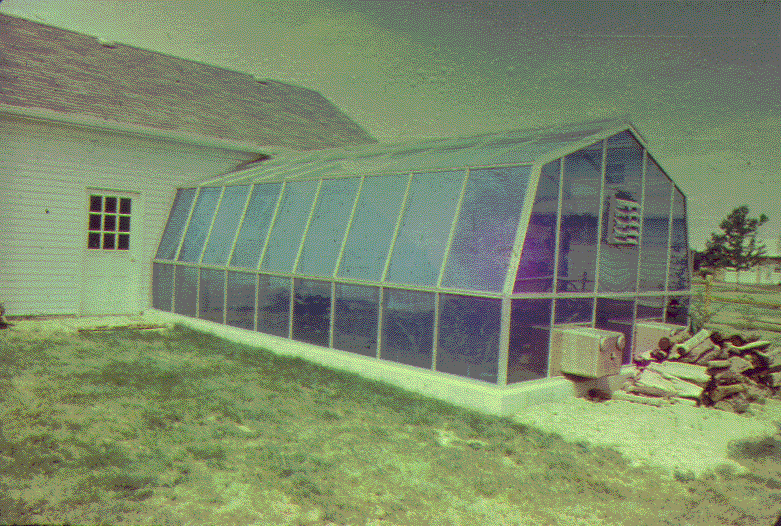
Figure 13.2: Example of an Attached Greenhouse.
The greenhouse should be included within the initial design of the house or careful thought should be given to greenhouse placement when adding one to a preexisting house.
page 6 of 14
Freestanding Greenhouse
Freestanding greenhouses (see Figure 13.3.) are separate from other buildings or greenhouses. Various styles are as follows:
- Even span
- Uneven span
- Gothic arch
- Quonset

Figure 13.3: Freestanding Greenhouse Styles
Advantage - Good environmental control (temperature, light)
Disadvantage - More land is needed
page 7 of 14
Connected Greenhouse
Connected greenhouses (see Figure 13.4) are several greenhouses joined together. Various styles include:
- Gutter-connected
- Dutch houses
- Barrel vault
- Sawtooth
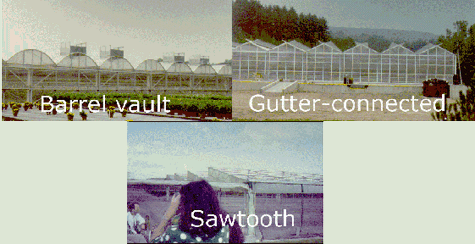
Figure 13.4: Connected Greenhouse Styles.
Advantages include:
- Less construction material needed
- Require less heat
- The overall cost is less
- More efficient because workers and equipment can move throughout the greenhouse with ease
- Less land is needed
Disadvantages include:
It is difficult to accommodate different crops when they require different environmental conditions such as temperature, humidity and light.
Information for small greenhouse structures can be obtained from books and cooperative extension service agencies. However, large commercial greenhouse structures are typically contracted out to specific companies that produce prefabricated and pre-assembled greenhouses.
page 8 of 14
Structural Parts of a Greenhouse
- Water and electrical lines should be located and placed before the foundation is constructed.
- The foundation should be level and provide adequate structural support for the greenhouse. Structural components of a greenhouse (Figure 13.5) include:
- Ridge (top of the greenhouse)
- Anchor support posts (main structural support)
- Trusses (structural strength)
- Purlins (structural strength)
- Ventilators (cooling)
- Cooling fans (cooling)

Figure 13.5: Structural Components of a Greenhouse.
page 9 of 14
Greenhouse Coverings
The most important function of a greenhouse covering is to allow the maximum amount of light into the greenhouse for the growth and development of plants.
- Glass
The main advantage of glass is that it provides the best light transmission of any greenhouse covering. However there are some disadvantages:
- Cost of glass is very high
- Cost of heating the greenhouse is higher
- Problems with vandalism
- Polyethylene
Advantages are:
- The initial cost is cheaper
- Fuel costs are lower
Disadvantages are:
- Polyethylene has a short life span; UV light causes breakdown of polyethylene. When UV inhibitors are applied to polyethylene the average life is three years.
- Condensation on the inside surface of the greenhouse can lead to disease occurrence and a reduction in the amount of sunlight entering the greenhouse.
- Fiberglass-Reinforced Plastic
The biggest advantage of fiberglass-reinforced plastic is that it allows the same amount of sunlight through as glass. However, in recent years fiberglass-reinforced plastic has decreased in popularity because of the following disadvantages:
- Very susceptible to UV light, dust and pollution degradation.
- Flammable and thus insurance rates may be higher.
- Acrylic and polycarbonate
Acrylic and polycarbonate types of greenhouse coverings have almost completely replaced the use of fiberglass-reinforced plastic because of the following advantages:
- Lightweight and easy to install
- Excellent heat insulating ability
- Good light transmission
A disadvantage is that it is flammable.
page 10 of 14
Criteria for Locating a Greenhouse Range
- Market - Is there going to be anyone who wants to buy your plants at that location?
- Accessibility - Are you near a major highway and are you highly visible to the general public? This is a catch-22 situation because you are also nearer to pollution (such as ozone and ethylene) and vandalism.
- Climatic conditions - It is important to consider the amount of sunlight, temperature (highs and lows), amount of snowfall and areas of high winds.
- Topography and drainage
- Water and other utilities - It is important to have a source of good quality water and other utilities such as electricity, fuel and waste disposal.
- Zoning regulations
- Labor supply - Both skilled and unskilled labor should be available.
- Expansion - It is important to have adequate room for future expansion.
page 11 of 14
Layout of the Greenhouse Range
Range Orientation
- Orient the range to allow for maximum light intensity to enter the greenhouse.
- Know the direction of the prevailing winds to orient the greenhouse to minimize heat loss. See Figure 13.6.
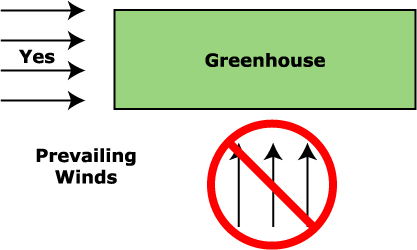
Figure 13.6: Prevailing Winds Diagram
- Entrances and drives should be accessible to large trucks, customers and employees.
Bench Orientation in the Greenhouse
- Common bench arrangements are as follows and shown in Figure 13.7:
- Longitudinal - Typically used for fresh flower production. This type arrangement allows for mechanization, but it is difficult for employees to move across the greenhouse.
- Cross benching - Provides for easy accessibility to all benches but does not maximize growing space.
- Peninsular - Provides accessibility by employees, while maximizing the growing area.

Figure 13.7: Common Bench Arrangements
** Movable benches allow the grower to change the bench arrangement as needed. Figure 13.8 shows an example of a movable bench.
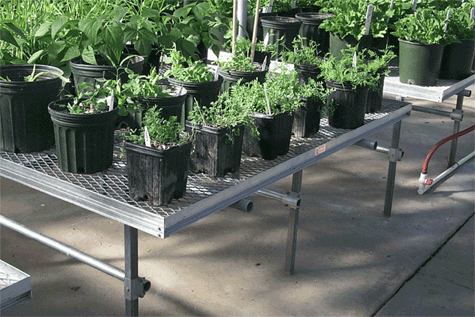
Figure 13.8: Movable Bench Arrangement
page 12 of 14
Controlling Greenhouse Temperatures
Good temperature control is very important to maintain a high quality crop. Heating systems commonly used in greenhouses include the following:
- Steam heating systems - typically used in large greenhouses.
- Hot water heating systems - typically used in smaller greenhouses.
- Forced-air heaters - commonly used in commercial greenhouse ranges. Problems with the dryness of the heat occur with this type of heating.
Each of the above use oil or propane to fuel the boiler, which may cause problems with pollutants such as propylene and ethylene.
- Infrared radiant heaters - The major advantage of this type of heater is that it conserves energy and has no problems with pollutants. The disadvantages associated with this heating system are:
- Cost
- It may be difficult to monitor the actual temperature received by the plant since air temperature is not a good indicator. Infrared heaters warm plants and other objects in the greenhouse but not the air temperature to the same extent.
Greenhouses need to be ventilated and cooled throughout the year. During the summer and even the winter months the air temperature in the greenhouse may become too high and inhibit plant growth. In addition to cooling, ventilation of a greenhouse provides the following:
- Renews the supply of carbon dioxide needed for photosynthesis.
- Circulates the air to reduce the chance of diseases.
- Prevents ethylene buildup.
page 13 of 14
Ventilation and Cooling Systems
Some types of ventilation and cooling systems are:
- Natural ventilation system - The air is exchanged through open ridge and side vents. This is one of the oldest methods of cooling. Note that injury to plants located near the side vents may occur.
- Fan-tube ventilation system - The air is distributed through a plastic tube with holes that run the length of the greenhouse. This system, shown in Figure 13.9, is used in conjunction with the heating system.
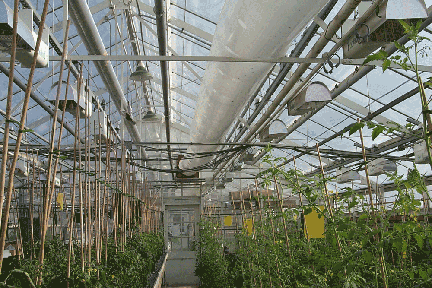
Figure 13.9: Fan-tube Ventilation System
- Fan and pad cooling system ( Figure 13.10) - This type of system is used for summer cooling.
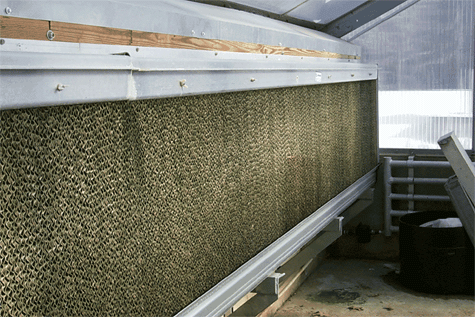
Figure 13.10: Fan and Pad Cooling Systems
- Fog evaporative cooling system - This system utilizes a fog generation system inside the greenhouse, which is similar to what you see when football players are cooled down on the sideline.
An alternative way to cool greenhouses is to use shading materials. Liquid shading compounds are often applied to glass as well as polyethylene covered greenhouses to reduce the light intensity as well as the temperature. This is typically done in the spring and summer. During times of the year when heat buildup is not a problem, this material is washed off to allow more light into the greenhouse.
page 14 of 14
Greenhouse Activity
In this lesson, we discussed different greenhouse structures, including their structural components and functions. Now we will take what we learned and apply it to a working greenhouse.
Your Activity:
- Visit a local greenhouse and gather the following information about the greenhouse:
- The greenhouse design
- The type of greenhouse covering
- The heating and cooling systems
- The irrigation system
- The type of bench arrangement
- The type of plants grown
- Use the word processing editor of your choice to write about your visit to the greenhouse. In addition to the information you were asked to gather, include your thoughts on the rationale behind the greenhouse design. Also, discuss the purpose and location of the greenhouse. When you are finished, save the document.
 When
you are finished, copy and paste what you have written into the Activity
7 Discussion Forum by the due date listed in the schedule section of the
course syllabus. To access the discussion forum, click on the Activity
7 Discussion Forum link. Remember, you can also access
the discussion forum by selecting the Lessons tab at the top of this page and
then selecting the Activities folder.
When
you are finished, copy and paste what you have written into the Activity
7 Discussion Forum by the due date listed in the schedule section of the
course syllabus. To access the discussion forum, click on the Activity
7 Discussion Forum link. Remember, you can also access
the discussion forum by selecting the Lessons tab at the top of this page and
then selecting the Activities folder.
That's it for this lesson! When you are ready, continue to the next lesson.
 As
you proceed through this lesson, answer the following items. They will
help you to focus on the important points in the lesson.
As
you proceed through this lesson, answer the following items. They will
help you to focus on the important points in the lesson.









